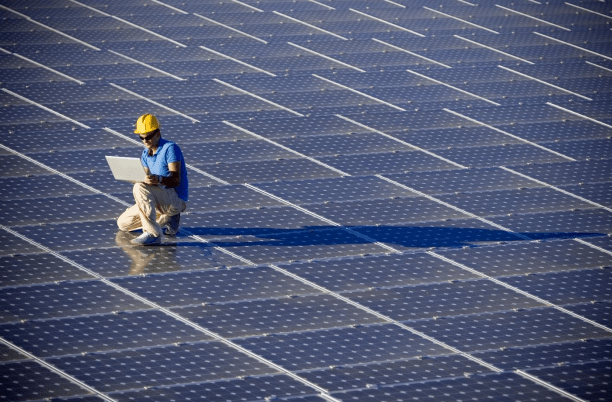India increased its share of renewable energy to 23.7% in total sources to generate electricity in 2020, reported the World Trade Organization (WTO).
In the period 2015 to date, India’s policies regarding the electricity sector were aimed at ensuring access to reliable and affordable services and diversifying energy sources.
To this end, the Indian government granted various incentives to expand the distribution network and promote the use of renewable energy, as a result of which the proportion of renewable energy sources (mainly solar and wind) to generate electricity increased from 14.6% in 2015 to 23.7% in 2020.
However, coal remains the main source of power generation in India.
The country continues to provide cross-subsidies in relation to retail rates; Subsidized rates are available to consumers below the poverty line and small households, and electricity for the agricultural sector is supplied either free of charge or on a flat-rate basis.
Distribution companies, which are mainly state-owned, continued to face serious financial difficulties due to undervalued electricity prices, which in turn hampered their ability to provide a reliable supply of energy.
Energy
In 2015, a voluntary program was launched to deal with the bad financial situation of companies, under which the states assume a percentage of corporate debt. As a consequence of the Covid-19 pandemic, consumers were allowed to defer paying their electricity bills.
India is the third largest producer and consumer of electricity in the world. Since 2014/2015, electricity consumption has increased considerably and is already above 1 million GW h.
The largest consumer continues to be the industrial sector; consequently, a program has been put in place to improve the energy efficiency of industries such as aluminum, cement, fertilizers, iron and steel, paper and pulp, and textiles.
Annual per capita consumption has risen from 1,010 kWh in 2014/2015 to 1,208 kWh in 2019/2020.
Electricity consumption, 2014 / 2015-2018 / 2019
According to the WTO, between 2015 and 2020, India continued to implement the National Electricity Policy of 2005, which focuses on ensuring the availability, quality and reliability of supply, as well as the financial viability of the sector.
The Tariff Policy, of 2016, aims, among other things, to guarantee affordable rates, attract investment, promote generation from renewable sources and improve the quality and reliability of supply.
In 2018, a new National Electricity Plan was launched to change India’s energy matrix by promoting renewable energy generation.
Its purpose is to install 175 GW of renewable energy by 2022 and reduce gas emissions by improving the efficiency of thermal power plants, closing coal plants at the end of their useful life and promoting electric vehicles.
Investments
Up to 100% FDI is allowed in the Indian electricity sector. Government approval is not required, except in the case of FDI above 49% on the electricity trading exchanges.
The generation of electricity from nuclear sources is reserved for the State. Foreign companies must be established in India to operate in the sector.
Public and private operators carry out electricity generation, transmission, distribution and trading activities.
The public sector remains the most important stakeholder, having 53.2% of the total installed capacity in 2019/2020.
The state owns the largest electricity generation company in India (NTPC Ltd.) as well as Power Grid Corporation of India Ltd. (PGCIL), which operates 90% of the interstate transmission network and maintains the network national.
Distribution also continues to be largely dominated by state-owned distribution companies.
India also has two electricity trading exchanges (PXIL and IEX). The electricity supply is guaranteed by load dispatch centers at the national, regional and state levels.
India’s power grid is connected to Bangladesh, Bhutan, Myanmar, and Nepal. Cross-border supply is governed by bilateral agreements. Since 2019, electricity trading is allowed throughout India, provided that both trading partners have a bilateral agreement with India in turn.
![]()

